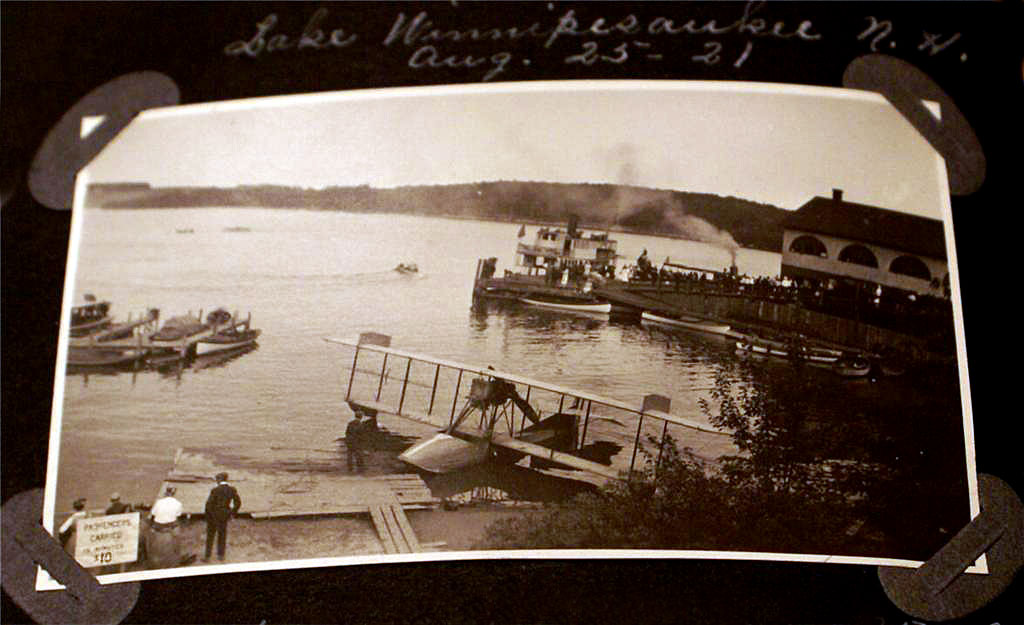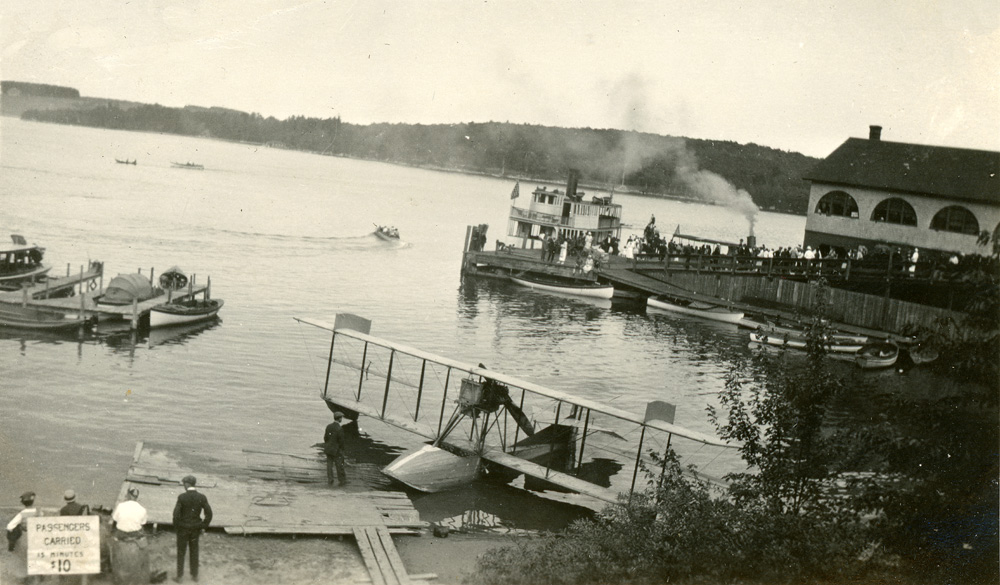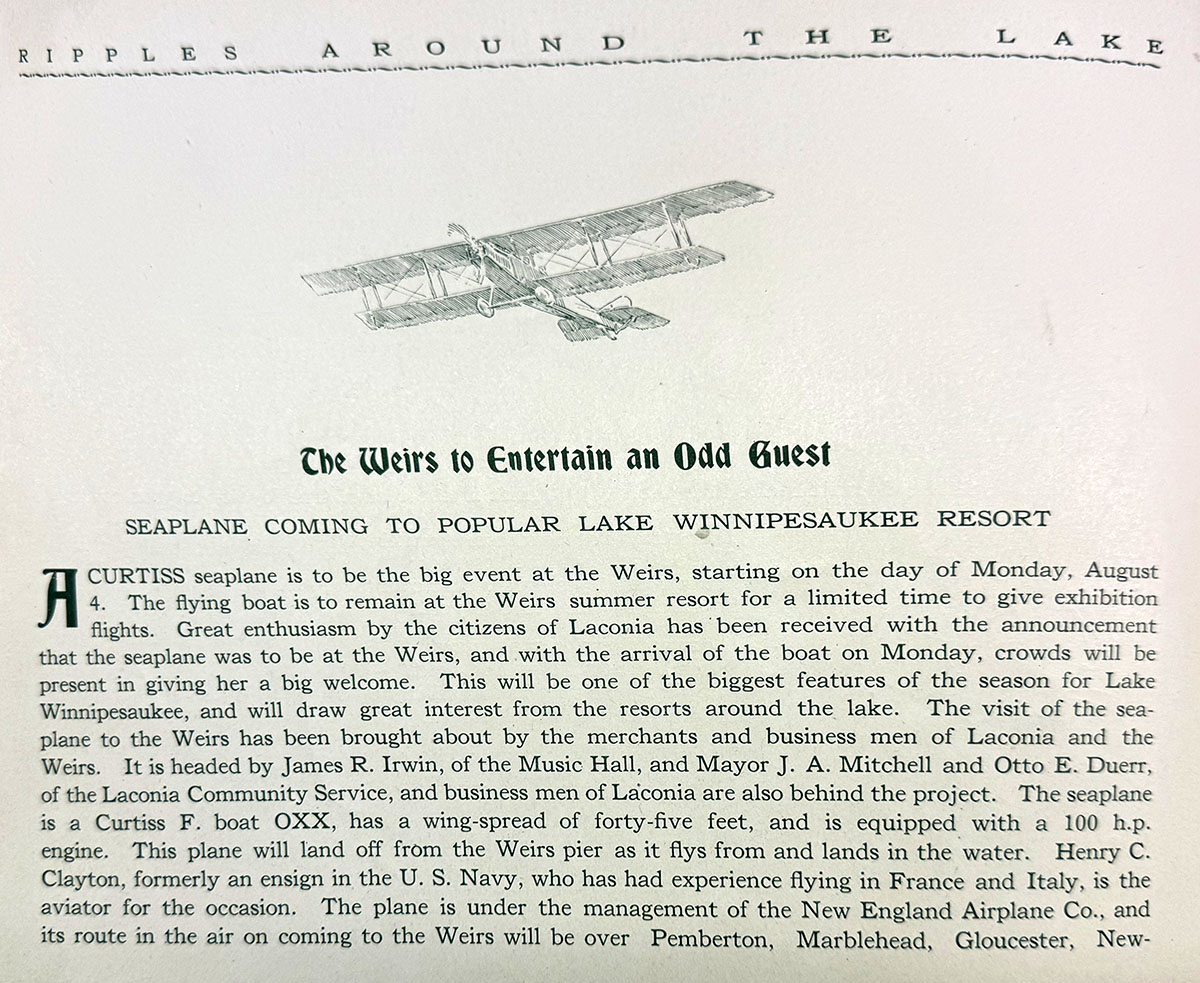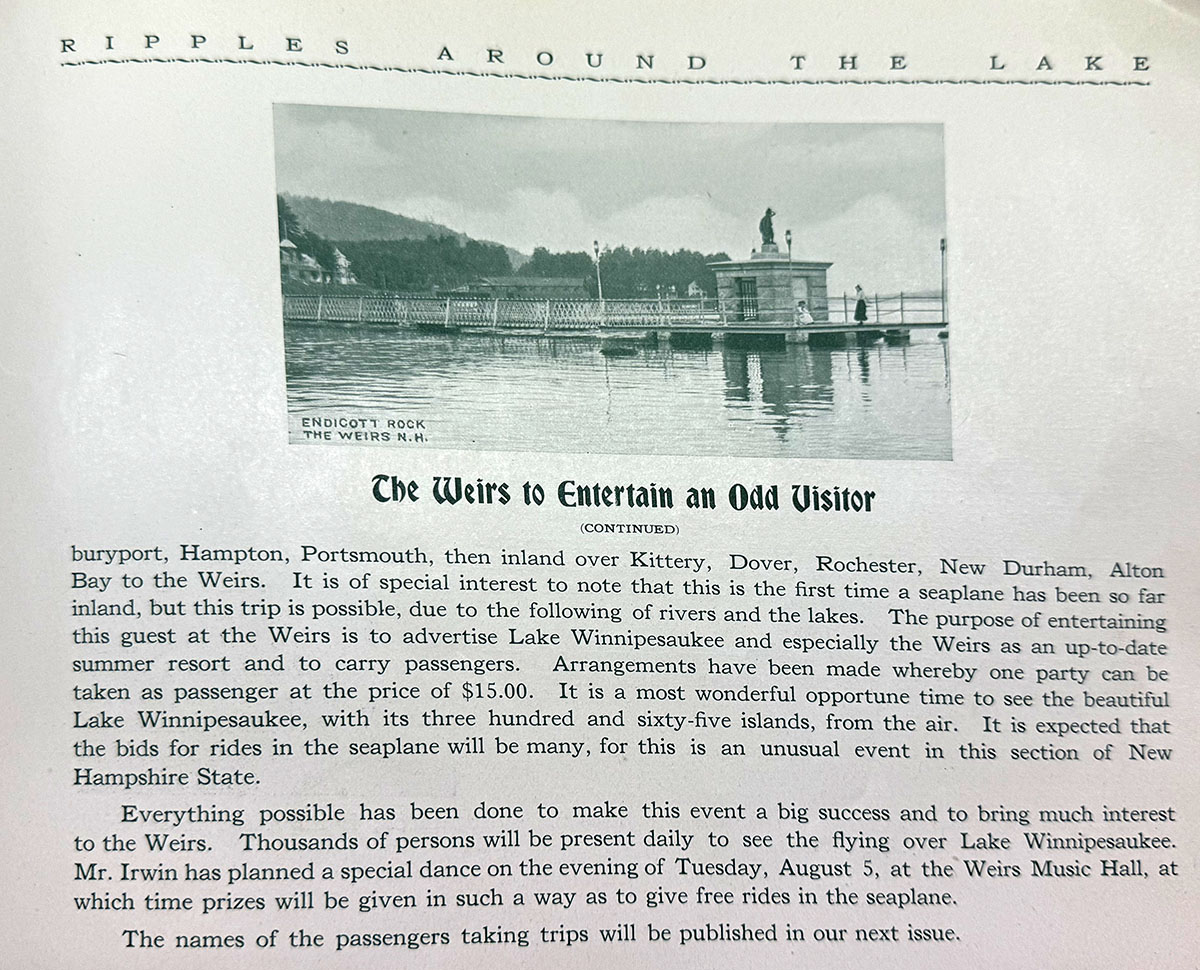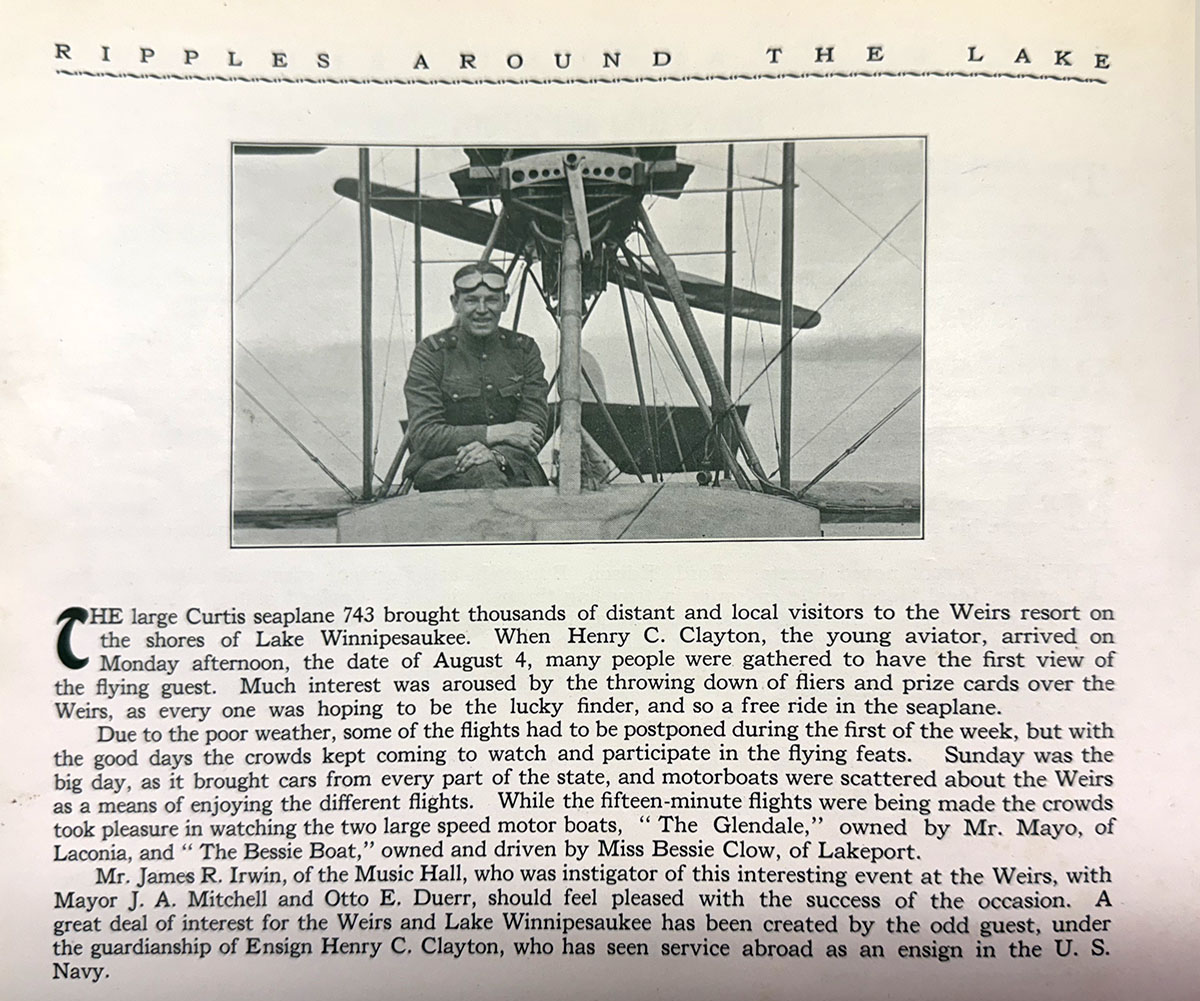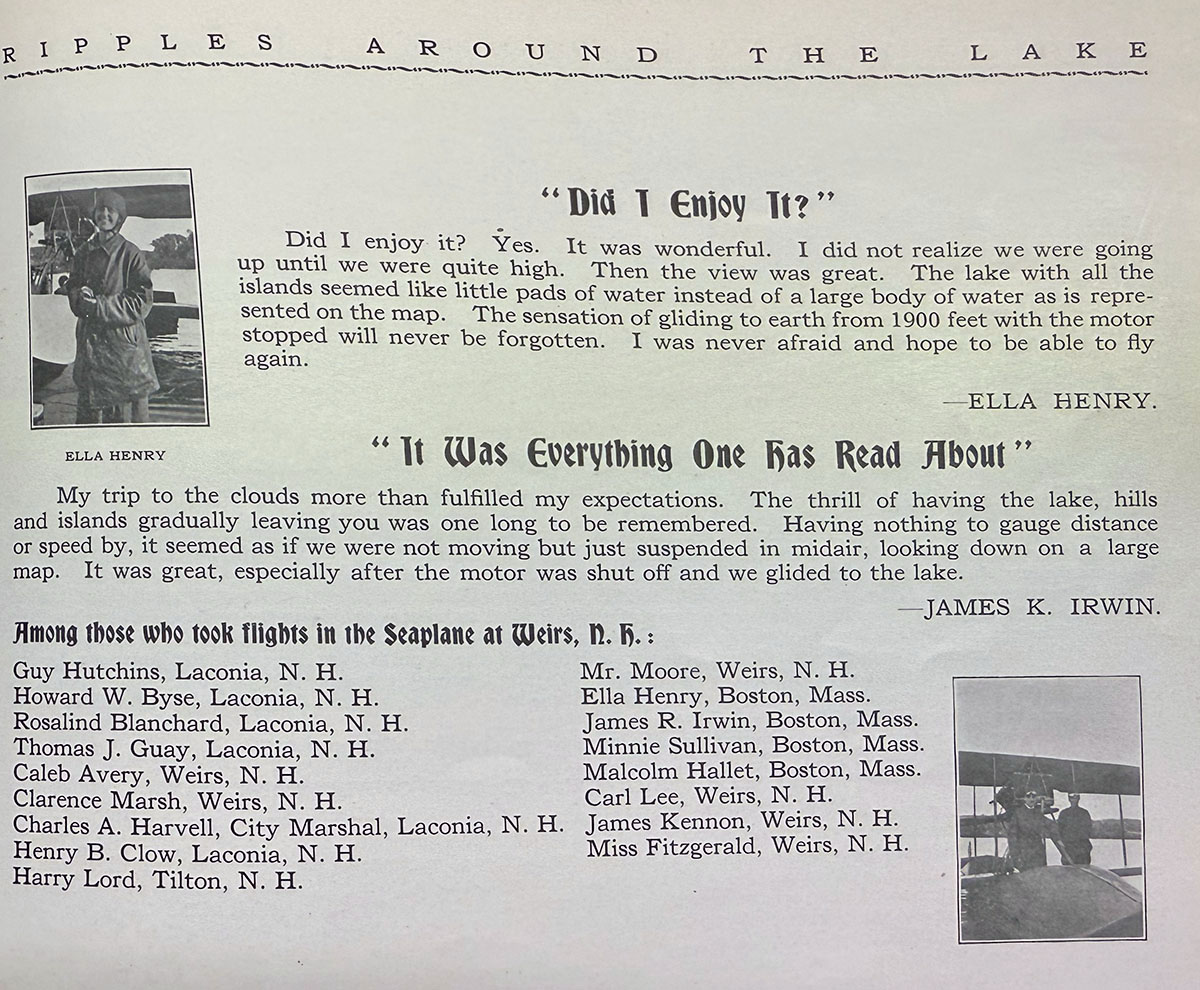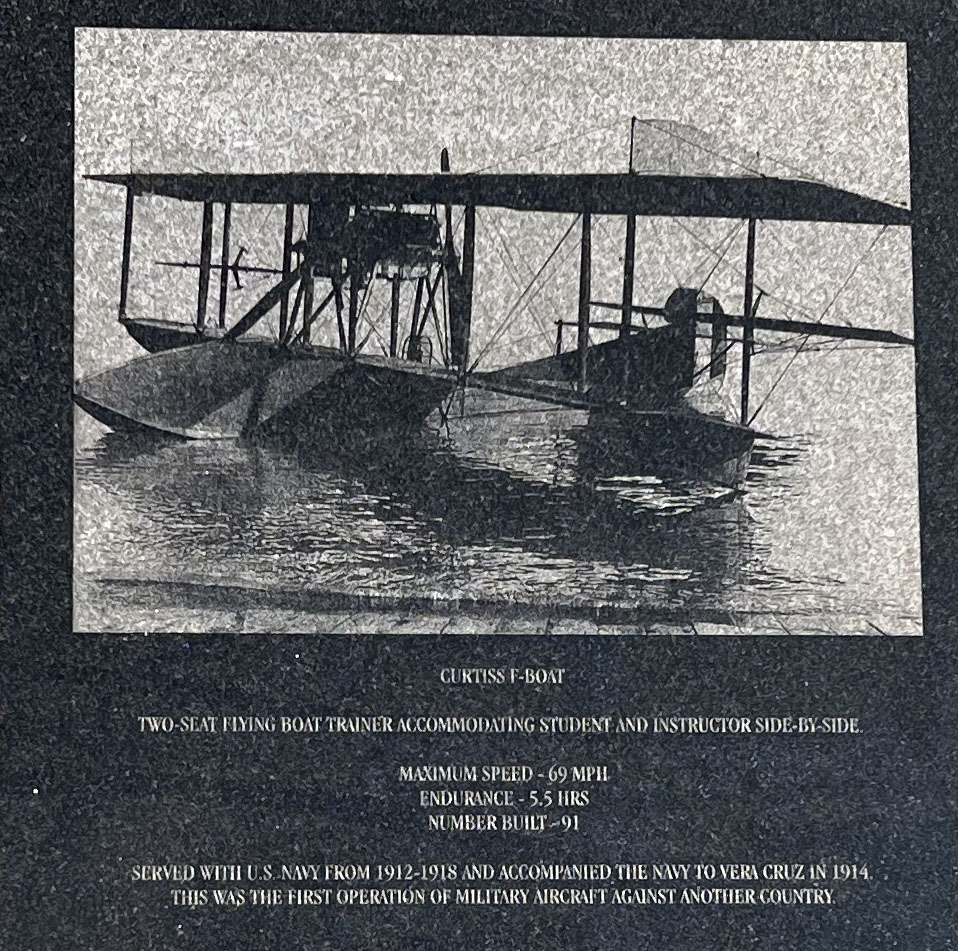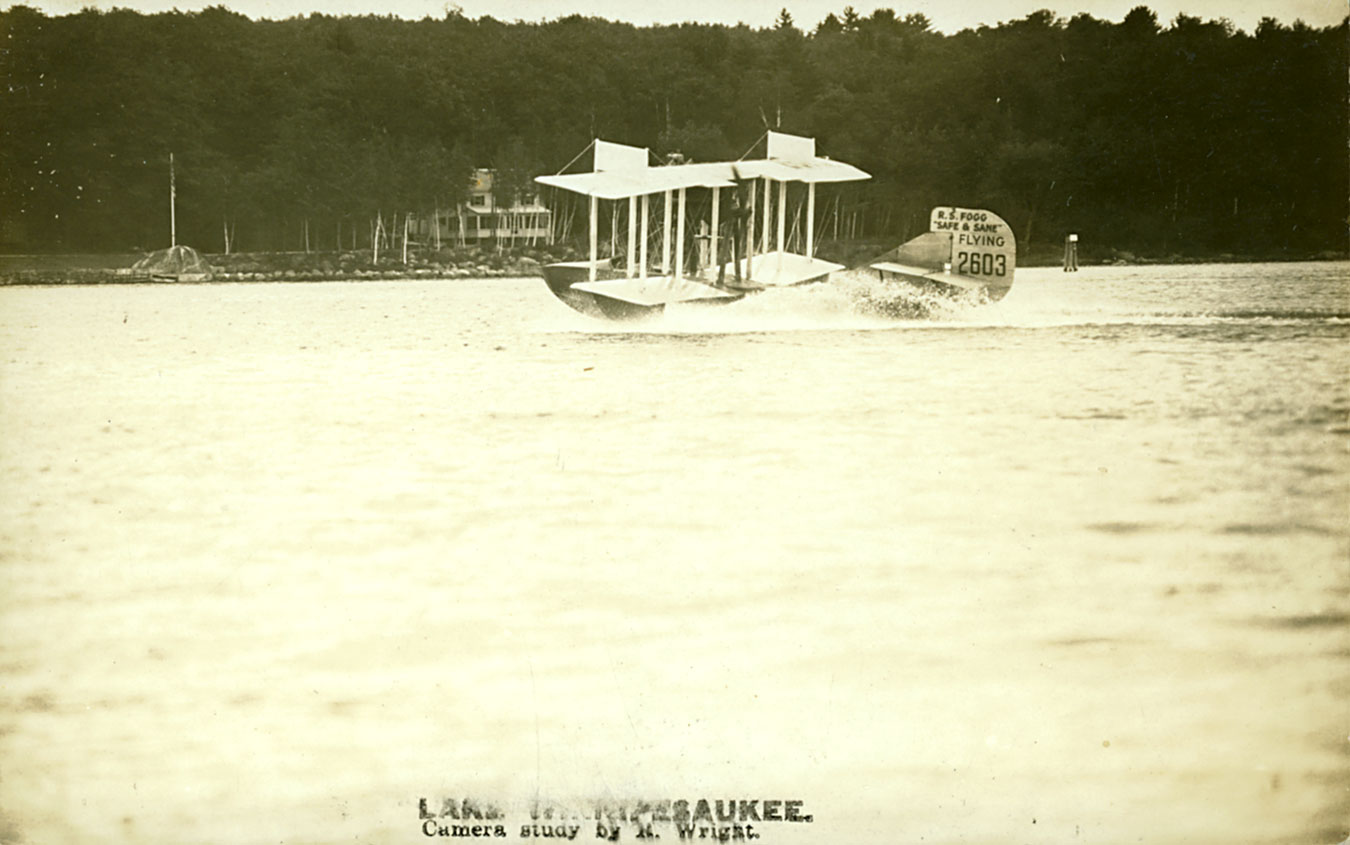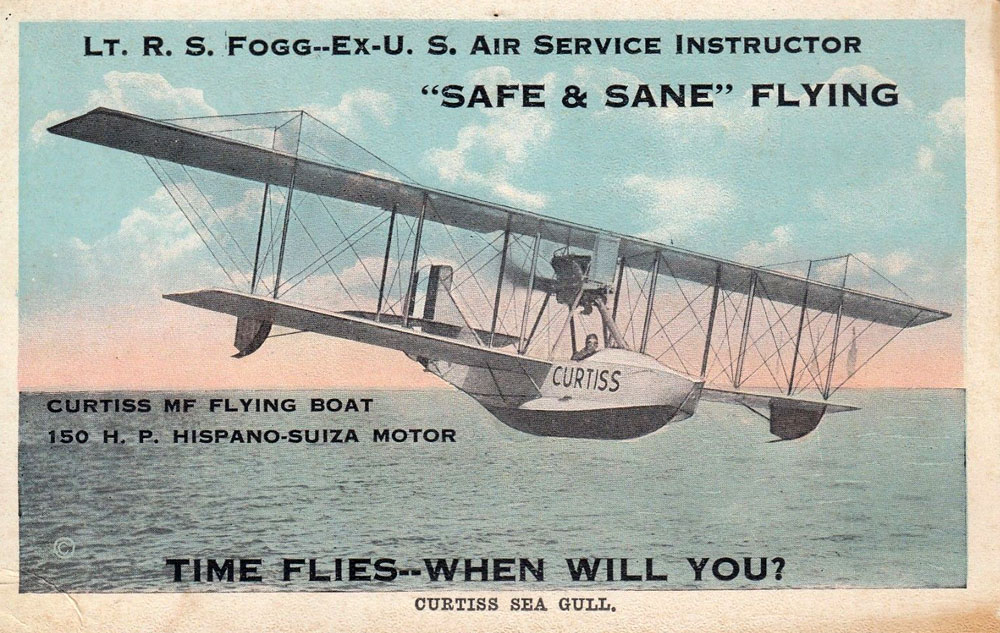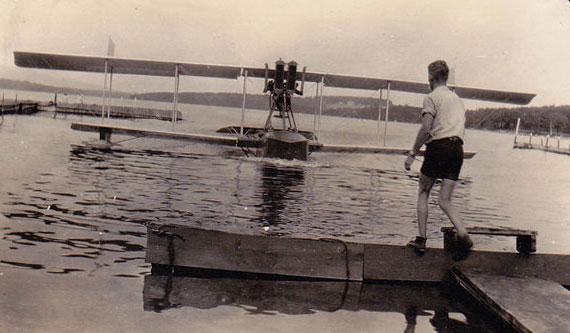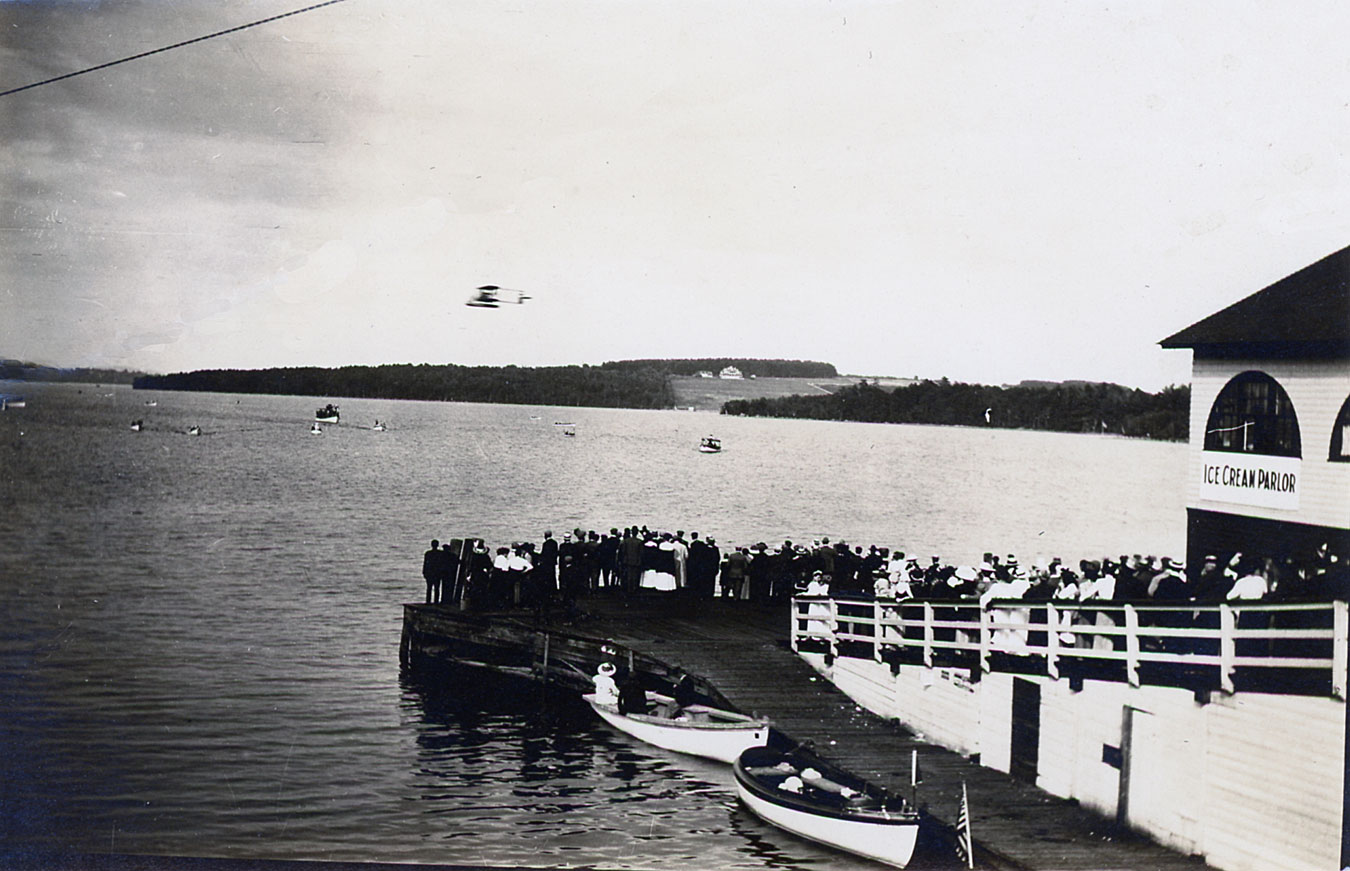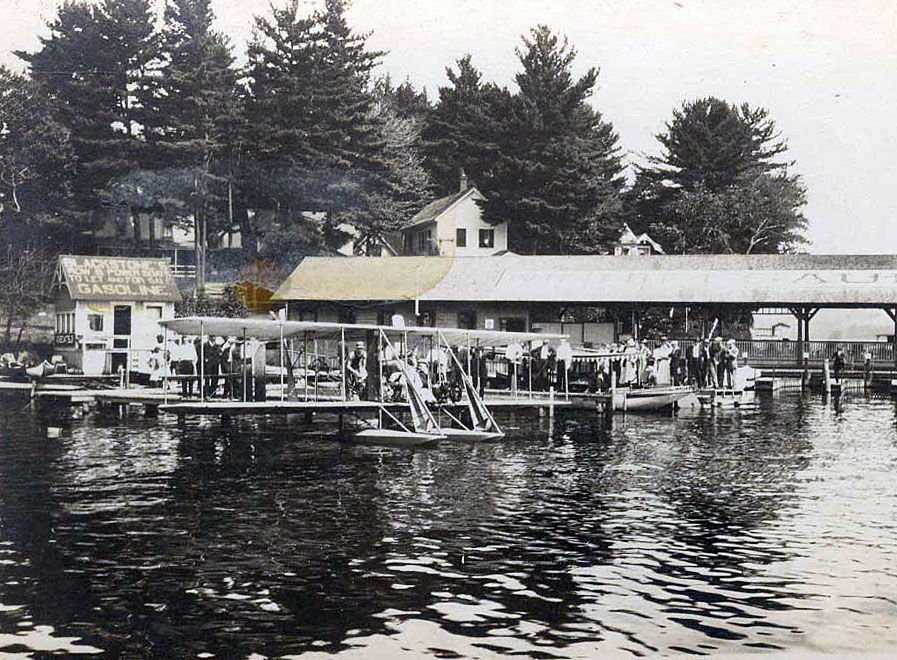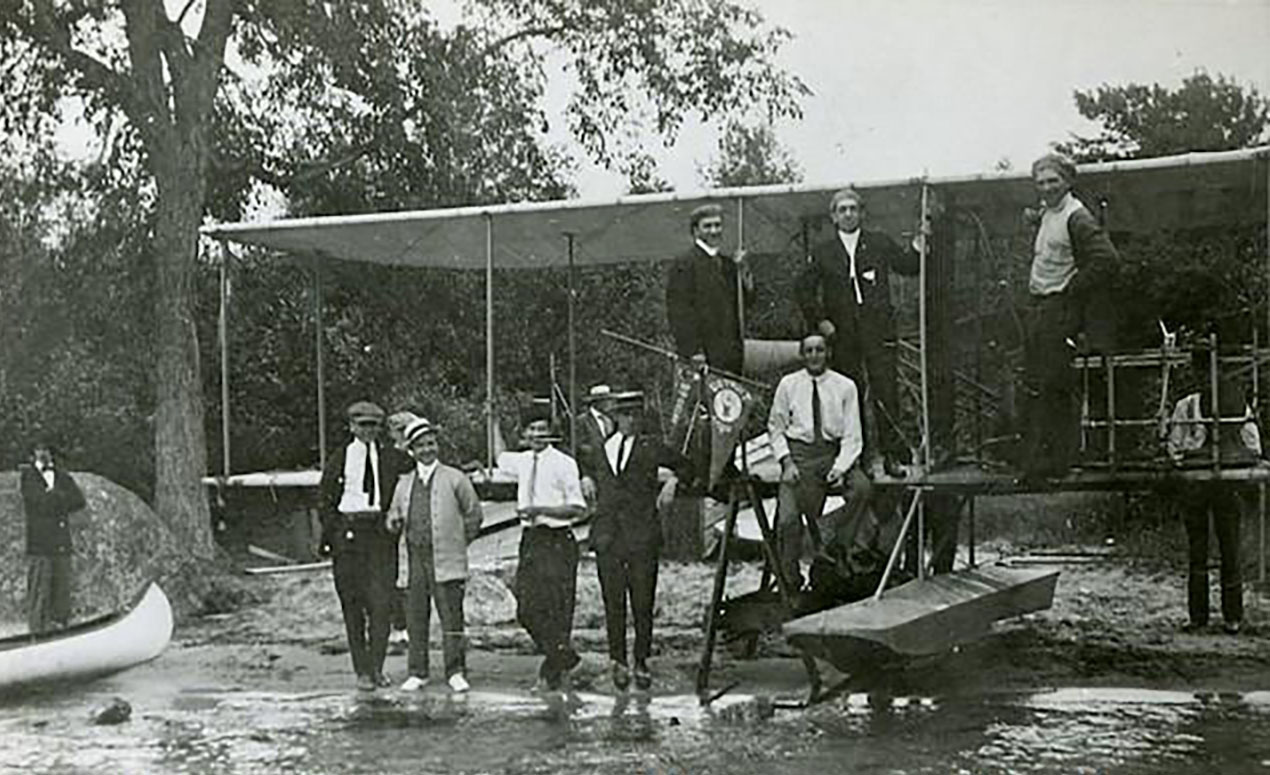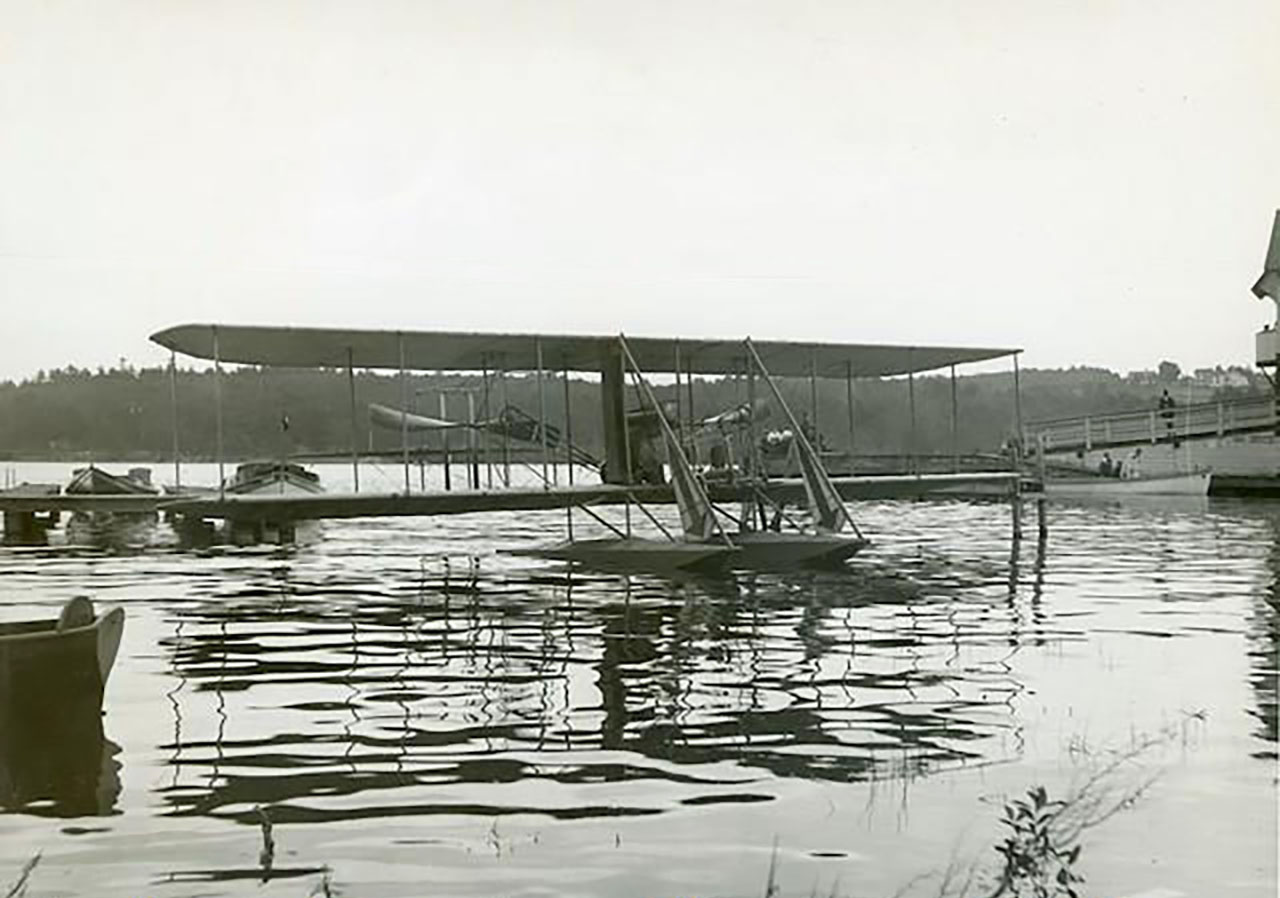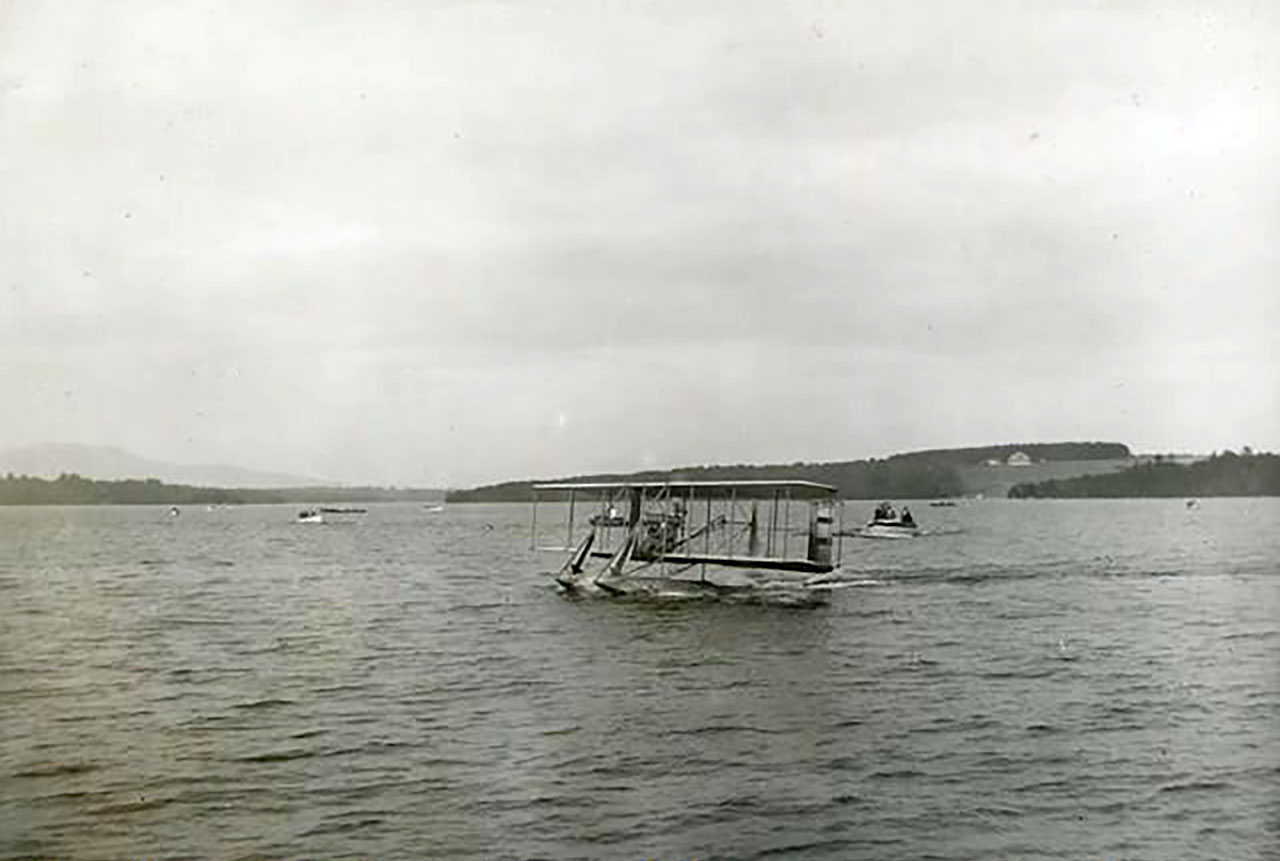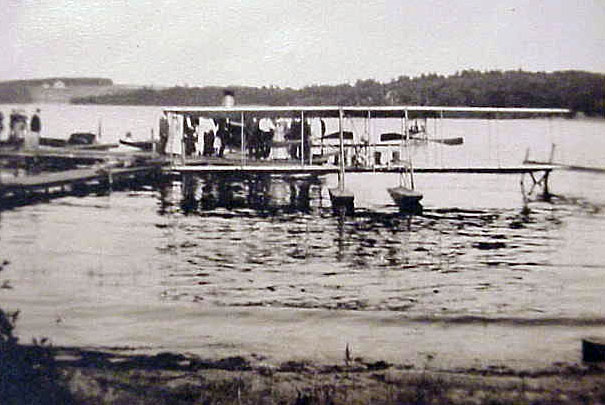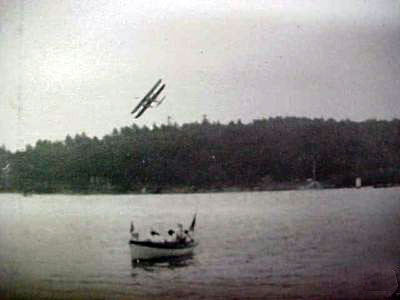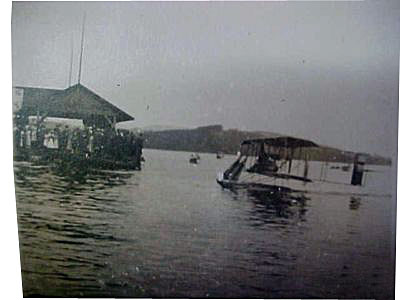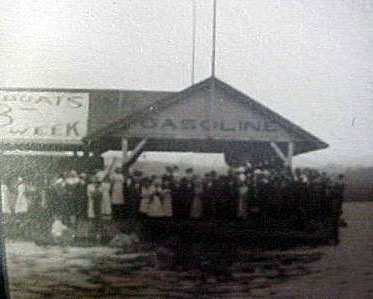Original Seaplane Base (1919-1924)
In this rare photo, dated August 25, 1921, we see that originally, the seaplane base was located between the Mount Washington wharf and the Winnipesaukee Pier. It was only later, after Irwin’s Winnipesaukee Gardens opened in 1925, that the seaplane base relocated to the other (southern) side of the wharf . The sign in the photo says “Passengers Carried – 15 minutes – $10.” The steamer Governor Endicott is docked at the Mount Washington wharf.
Note the propeller of the seaplane in the photo. It is mounted in a “pusher” configuration, with the engine in front of the prop, unlike modern seaplanes, where the propeller is in a “tractor” configuration, with the engine mounted behind the propeller. Note also that this primitive seaplane, or “flying boat“, landed on its belly.
The story of the original seaplane ride was revealed in a Feb 23, 1955 article that was a tribute to Jim Irwin. In 1919, “…Jim (Irwin) read about a man who owned a seaplane at Pemberton, Mass., and was taking up passengers at $25 a hop. Jim went down there, took a ride and figured this would be an attraction for the Weirs. Upon his return he called a meeting of Cale Avery, O.W. Morgan, Jim Kennon and others and got sufficient backing to close a deal with Ens. Morgan, owner of the plane, a Curtis F Seaplane with a 95hp Curtis V-8 engine…they guaranteed $100 a day for seven days — the plane business was good and the owner stayed for four seasons.”
During the summer of 1921, the seaplane rides were given by aviator Lt. Phillip H. See. The aviator had arrived in the Weirs from Boston. On July 4th, See gave exhibition flights as well as rides where he took passengers “up, out, and over beautiful Lake Winnipesaukee”. On August 6, 1921, Endicott Rock Day was celebrated with exhibition flights by See, along with speeches in the Veterans grove, sports games, and a concert. The event was organized by Jim Irwin, President of the Weirs Improvement Association. See remained in the Weirs all summer and gave daily exhibitions and rides.
The following, two-page article, “The Weirs to Entertain a Strange Guest”, appeared in a July, 1919 copy of the weekly magazine “Ripples around the Lake”. This was the first year of the four-year run of the orginal seaplane ride in Weirs Beach.
A follow-up page from “Ripples” on the visit of aviator Henry C. Clayton for the inaguaral seaplane rides on August 4, 1919.
BOB FOGG
The photo below shows what seems to be the same seaplane as in the above photo, but it was a different, Curtis MF “Sea Gull” model. Equipped with a 150hp Hispano-Suiza engine, the plane’s top speed was 69mph. It could carry four passengers, plus the pilot. The plane is seen near the Weirs Channel, with the Interlaken Park boulder and flagpost visible to the left. On the tail of the seaplane, the marking “R.S. Fogg ‘Safe and Sane’ Flying shows that the operator of this seaplane was none other than Bob Fogg, who went on to establish the U.S.’s first airmail postal delivery service. Fogg operated the Sea Gull until 1929, when he upgraded his service with newer model seaplanes.
HARRY ATWOOD
Earlier, in July 1912, Weirs Beach had been thrilled by the week-long aerial demonstrations of aviator Harry Atwood. His Burgess-Wright Hydro-Aeroplane landed on two pontoons. In the long run, this floatplane design became the standard design for seaplanes. During his visit to Weirs Beach, Atwood took several passengers up on “quite a number of flights…all of them reported themselves well satisfied with the novel experience”. These were the first seaplane rides ever given in Weirs Beach, occuring before there was a permanent seaplane base.
Atwood’s seaplane had a 35 horsepower engine and a top speed of 40mph. Its wingspan was 39′ wide and body 26′ long. The pilot and his single passenger sat in front of the engine and propeller, but it was not too uncomfortable. In its pusher configuration, the wind from the prop would be blowing the other way. The plane would be towed out from the Winnipesaukee Pier to the middle of Weirs Bay to start its takeoff run.
Atwood stayed for 9 days and made up to six flights daily. He was able to fly on the first Saturday, but rain on the first Sunday and strong winds on Monday and Tuesday curtailed any flights. He resumed on Wednesday and flew until the Sunday of the final weekend. By the final day, the acclaim was such that about 6000 people showed up to watch, with 740 coming by car, and all the trains filled.
“BLACKSTONE’S ROW & POWER BOATS TO LET AND FOR SALE GASOLINE”
Here are some more photos of Atwood’s seaplane near the Winnipesaukee Pier.










